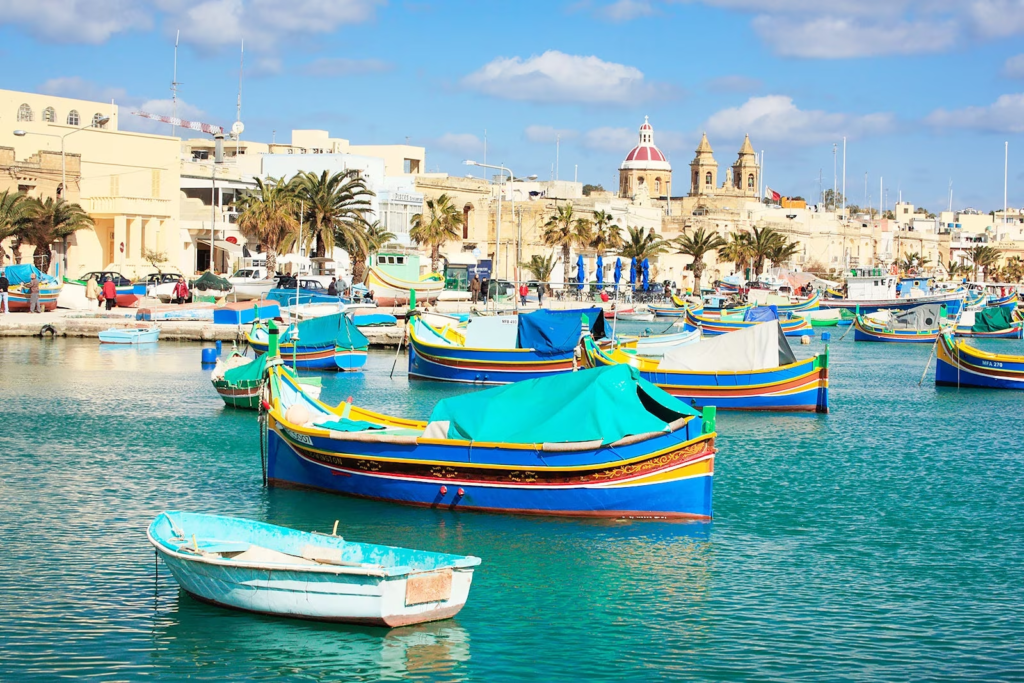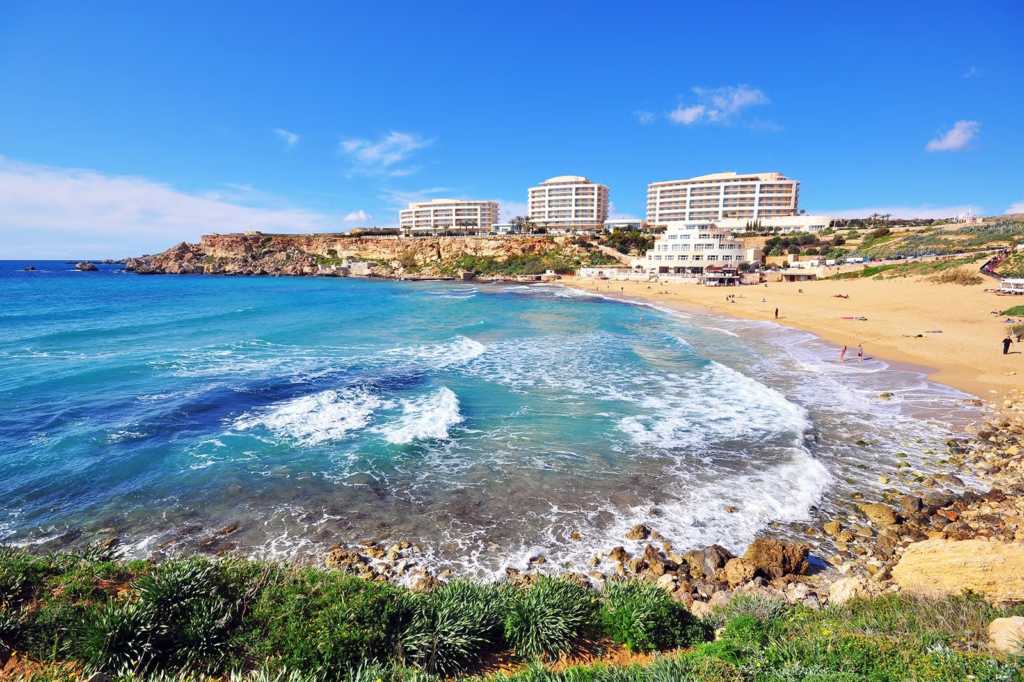Malta, a sun-drenched archipelago in the heart of the Mediterranean, beckons travelers with its rich tapestry of history, stunning coastlines, and vibrant culture. This tiny island nation boasts a legacy stretching back millennia, leaving behind a treasure trove of ancient temples, fortified cities, and captivating stories. But Malta is more than just a history buff’s paradise. With its crystal-clear waters, charming fishing villages, and exciting water sports, it caters to every kind of traveler.
So, whether you’re seeking to delve into the past, soak up the sun on pristine beaches, or indulge in an adrenaline rush, Malta has something for you. Here’s a glimpse into the best things to do in Malta, ensuring you have an unforgettable experience.

Step Back in Time: Unveiling Malta’s Historical Gems
Malta’s historical significance is undeniable. The island served as a strategic crossroads for civilizations throughout history, leaving behind a unique blend of influences. Here are some must-visit historical sites:
Valletta: Malta’s fortified capital city, Valletta, is a UNESCO World Heritage Site. Wander the narrow streets lined with baroque architecture, marvel at the opulent St. John’s Co-Cathedral (home to Caravaggio’s masterpiece, “The Beheading of John the Baptist”), and soak in the stunning harbor views from the Upper Barrakka Gardens.
Mdina: Nicknamed the “Silent City,” Mdina is a car-free medieval town enveloped in a timeless atmosphere. Explore the maze-like alleys, admire the golden-hued limestone buildings, and visit the imposing Mdina Cathedral.
Hagar Qim and Mnajdra Temples: Dating back to 3600-3200 BC, these megalithic temples are some of the oldest standing structures in the world. Marvel at the massive stones and contemplate the ingenuity of these ancient civilizations.
Hypogea: Delve into the fascinating world of Malta’s underground burial chambers, known as Hypogea. The Hal Saflieni Hypogeum, a UNESCO World Heritage Site, is a multi-level necropolis showcasing intricate carvings and archaeological wonders.
Island Hopping Adventures: Exploring Gozo and Comino
Beyond the main island, Malta offers exciting island-hopping adventures. A short ferry ride away lies Gozo, a haven of tranquility known for its rural charm and natural beauty. Here’s what awaits you:
Victoria (Rabat): Gozo’s capital, Victoria, boasts a charming citadel perched atop a hill. Explore the narrow streets, visit the Gozo Cathedral, and soak in panoramic island views.
Dwejra Bay: This dramatic bay is famous for the iconic Azure Window, a natural rock arch that sadly collapsed in 2017. However, the bay’s rugged beauty and the nearby Inland Sea, a unique natural pool accessible by boat, remain a must-see.
Ramla Bay and Marsalforn Bay: Gozo offers a variety of beaches, catering to every preference. Ramla Bay, with its golden sand and shallow waters, is ideal for families, while Marsalforn Bay caters to water sports enthusiasts.
Comino, Malta’s smallest inhabited island, is a paradise for beach lovers. The jewel in its crown is the Blue Lagoon, a sheltered bay with crystal-clear turquoise waters, perfect for swimming, snorkeling, and diving.
Embrace the Maltese Coast: Beaches, Bays, and Watersports
Malta boasts a stunning coastline with a plethora of beaches and coves. Whether you’re seeking a lively atmosphere or a secluded haven, you’ll find your perfect spot.
Mellieħa Bay: This long, sandy beach is a popular choice, offering water sports, sun loungers, and beach bars.
Golden Bay: Another favorite, Golden Bay offers beautiful golden sand, crystal-clear waters, and a relaxed atmosphere.
Paradise Bay: For a more secluded experience, head to Paradise Bay, a small cove with dramatic cliffs and turquoise waters.
St. Peter’s Pool: This natural rock pool carved by the sea is a hidden gem, perfect for swimming and cliff jumping (at your own risk!).
Malta is a haven for water sports enthusiasts. From scuba diving and snorkeling in crystal-clear waters teeming with marine life to windsurfing, kayaking, and stand-up paddleboarding, there’s something for every thrill-seeker.

FAQ’S
What ancient sites can’t be missed?
Malta boasts some of the oldest freestanding structures in the world. Megalithic temples like Hagar Qim and Mnajdra, dating back to 3600-3200 BC, stand as testaments to a bygone era. Explore the UNESCO-listed Hypogeum, an underground necropolis with intricate carvings, offering a glimpse into prehistoric burial practices.
Where can I delve into Malta’s colorful past?
Valletta, Malta’s fortified capital city, is a UNESCO World Heritage Site. Explore the Grandmaster’s Palace, once the seat of power for the Knights of St. John, and marvel at the opulent St. John’s Co-Cathedral, housing the famed Caravaggio masterpiece, “The Beheading of St. John the Baptist.” Mdina, a silent city with a maze of golden-hued buildings, offers a tranquil escape and a glimpse into medieval Malta.
What about World War II history?
The Lascaris War Rooms, an underground complex, served as British headquarters during WWII. Explore the tunnels and relive the drama of the war through maps, communication equipment, and displays. Fort St. Elmo, a historical fort housing the National War Museum, showcases Malta’s military history from the Bronze Age to the present day.
Where can I find the perfect beach paradise?
Malta’s coastline is dotted with stunning beaches, each with its own charm. Mellieħa Bay, with its long stretch of golden sand, is ideal for families. Paradise Bay, a secluded cove with turquoise waters, offers a slice of tranquility. For water sports enthusiasts, Golden Bay provides excellent windsurfing and kitesurfing opportunities.
What about the famous Blue Lagoon?
The jewel in Malta’s crown is undoubtedly the Blue Lagoon on Comino, a smaller island accessible by ferry. The lagoon’s shallow turquoise waters are perfect for swimming, snorkeling, and soaking up the Mediterranean sun. Explore hidden coves and caves, or simply relax on the pristine white sand.
Is Malta good for diving and snorkeling?
Absolutely! Malta’s underwater world is teeming with marine life, from colorful reefs and shipwrecks to playful dolphins. Dive sites like the Blue Grotto, a series of sea caves with an enchanting light show, and the wreck of the MV Xlendi, a former car ferry teeming with fish, offer unforgettable experiences.
What are some unique activities in Malta?
Explore Malta’s rugged coastline on a kayaking or stand-up paddleboarding adventure. Hike through scenic trails like the Dingli Cliffs, offering breathtaking views of the Mediterranean. For a touch of whimsy, visit Popeye Village, the quirky film set used in the 1980s movie “Popeye.”
Can I explore beyond the main island?
Malta is an archipelago, and the sister islands of Gozo and Comino offer distinct experiences. Gozo, known for its laid-back charm, boasts historical sites like the Cittadella, a fortified citadel, and stunning natural beauty like Dwejra Bay, where the iconic Azure Window once stood. Comino, with its car-free environment, is ideal for those seeking a peaceful escape.
What about Malta’s nightlife?
Malta’s nightlife caters to diverse preferences. Paceville, in St. Julian’s, is a hub for clubs and bars, while towns like Sliema and Valletta offer a more relaxed atmosphere with pubs and wine bars. Traditional Maltese festas, village festivals with vibrant music and fireworks, are a unique way to experience local culture.
What’s the best time to visit Malta?
Spring (March-May) and autumn (September-November) offer pleasant temperatures and sunshine without the peak summer crowds. July and August are the hottest months, ideal for beach lovers, but expect larger crowds and higher prices.
How do I get around Malta?
Malta has a well-developed public bus network connecting most towns and villages. Taxis are readily available, and car rentals offer flexibility for exploring at your own pace.
What about food and drink?
Maltese cuisine is a delightful blend of Mediterranean influences. Sample fresh seafood dishes like Lampuki Pie (fish pie),
To read more, Click here